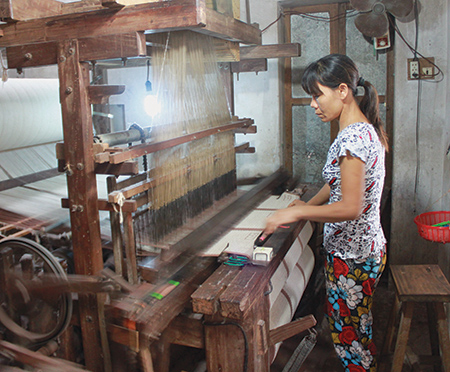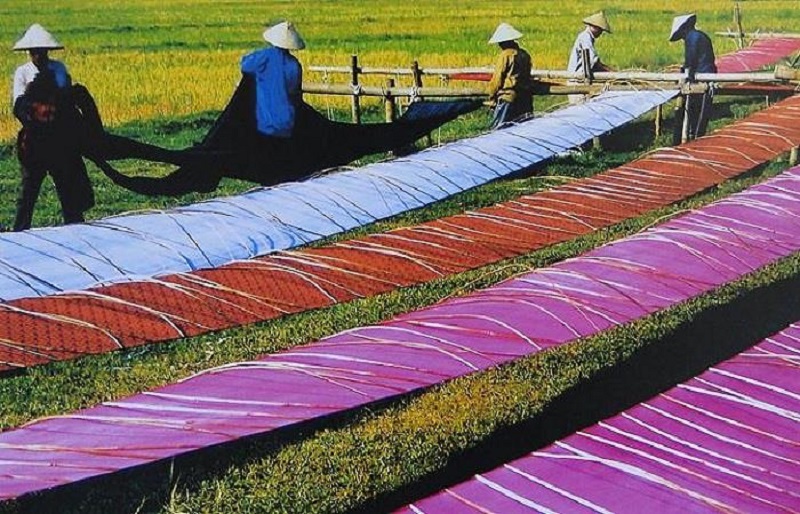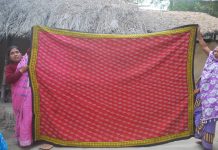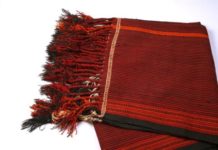In Vietnam, cloth weaving has been around for many years. It has been attached to the self-sufficient life so that all provinces had brocade villages in the past. Depending on the textures and design of the products, Vietnamese people separate weaving into three categories: cloth weaving (using cotton fibers), silk weaving (using silk yarn), and brocade (using both cotton, silk and linen yarn bark).
 Cotton plants are grown in fields or highlands. Farmers collect the bolls when they are mature and bloomed to reveal white tufts of cotton. The bolls will be rolled over wooden shaft to leave out the seeds, then will be pulled out into raw fiber strings. These strings will be made together to be yarn. The Vietnamese people do not colour the strings before brocading, instead they input the white strings into frames and imprint patterns or colours afterwards. In the past, the width of a fabric piece was only 42 cm, so that they have to connect the fabric pieces to tailor clothes.
Cotton plants are grown in fields or highlands. Farmers collect the bolls when they are mature and bloomed to reveal white tufts of cotton. The bolls will be rolled over wooden shaft to leave out the seeds, then will be pulled out into raw fiber strings. These strings will be made together to be yarn. The Vietnamese people do not colour the strings before brocading, instead they input the white strings into frames and imprint patterns or colours afterwards. In the past, the width of a fabric piece was only 42 cm, so that they have to connect the fabric pieces to tailor clothes.
 Today, with the development of the textile industry, the villages no longer produce brocade but have switched to woven cloths. Yarn is dyed before being woven to create colours and patterns for different types of scarves. Two largest villages are Meo Village, Thai Binh and Phung Xa Village, Hanoi. Each village has more than 3,000 brocade makers, using more than 2,000 brocade machines, and thousands of other workers hired from local area. The outstanding brocade artists are Mr. Nguyen Quang Vinh (Phung Xa Village), Mr. Nguyen Van Cham, and Mr. Dinh Hong Quan (Meo Village). Many visitors directly visit these two villages.
Today, with the development of the textile industry, the villages no longer produce brocade but have switched to woven cloths. Yarn is dyed before being woven to create colours and patterns for different types of scarves. Two largest villages are Meo Village, Thai Binh and Phung Xa Village, Hanoi. Each village has more than 3,000 brocade makers, using more than 2,000 brocade machines, and thousands of other workers hired from local area. The outstanding brocade artists are Mr. Nguyen Quang Vinh (Phung Xa Village), Mr. Nguyen Van Cham, and Mr. Dinh Hong Quan (Meo Village). Many visitors directly visit these two villages.
Brocade has always been associated with sericulture. When the silkworm finished cysts, one would drop cocoons in boiling water to gradually withdraw filaments. Depending on the requirements, one combines several small silk strands woven into the natural yellow colour of silk, paddled into rolls, wash them, and then dry them out. These filaments are attached before being threaded into the looms. Unlike weaving, techniques on silk looms are very complex in order to make the textile fibres have the same colors but still create a pattern on the silk surface. While brocading, the maker must plan ahead so that new patterns can be formed. Depending on the method of spinning and woven pattern, many different types of silk brocades are produced, specific to individual villages. Some kinds of silk with yarn that is dyed before brocading create many special possibilities of mixing colors so that one can view different colours at different angles.
 The most popular silk brocading village is Van Phuc, Hanoi. There are 2,500 makers working on more than 1,000 silk looms.
The most popular silk brocading village is Van Phuc, Hanoi. There are 2,500 makers working on more than 1,000 silk looms.





